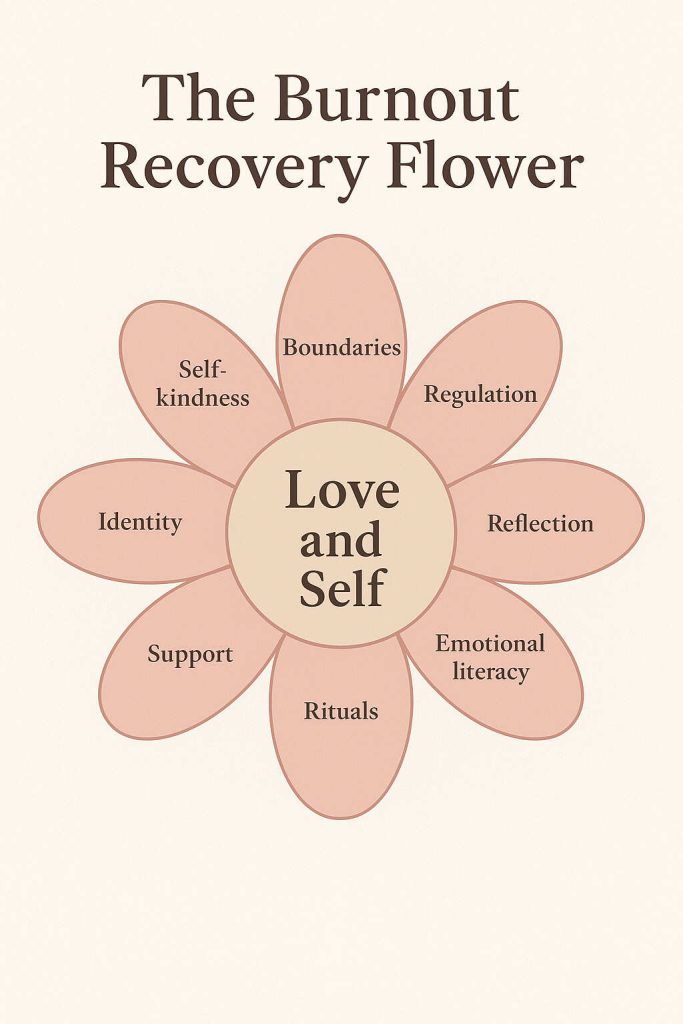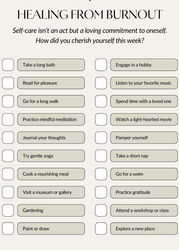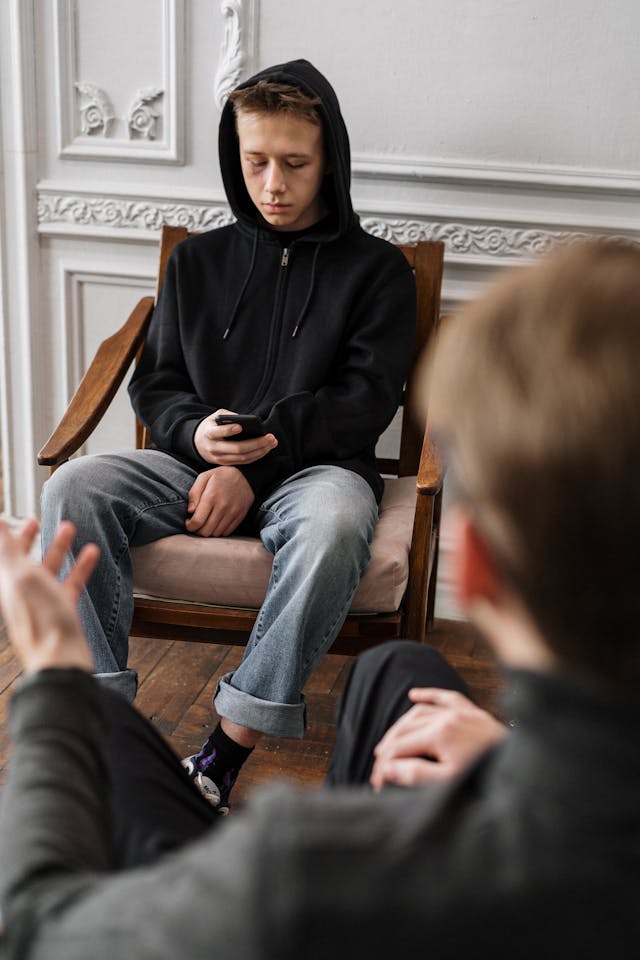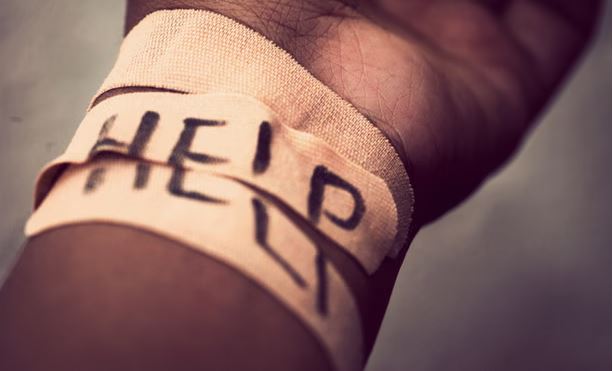Emotional burnout is a strange kind of silence. I know it so well because I have been there, especially during my early days of marriage. I was working two jobs, including my residency, and had to manage my household chores as well, so I had absolutely zero time for myself. At first, I was too engaged even to realize that I was heading towards a physical and emotional burnout until I got severely ill. I was not able to take care of my health and well-being in any way. It was that time when I figured that I had reached a point where I could break down at any moment if I didn’t take a pause and rest.
Emotional burnout does not always arrive with noise or visible breakdowns; sometimes, it shows up quietly, in the form of exhaustion, irritability, numbness, or the terrifying inability to recognize who you used to be.
As an ambitious working woman and an individual who has navigated the dense fog of burnout, I know how deeply it corrodes one’s inner world. It disconnects you from your sense of identity, your relationships, your capacity to feel joy, and the delicate harmony between “Love and Self”.
My previous piece, “5 Hidden Barriers That Disrupt Love and Self-and How To Break Them,” explored the obstacles, and today’s article will offer a map towards repairing the damage.

What follows are the 14 ways I personally and professionally recommend to rebuild Love and Self after burnout, step by step, gently, and sustainably.
1. Honor The Collapse Instead Of Resisting It.
There is a profound line by John O’Donohue: “When the soul is forced to endure too much, it will simply dim the light.”
Burnout is not a failure; it is your inner light dimming to protect yourself.
When I discovered that burnout is an intelligent response rather than a character flaw, I stopped bashing myself. Respecting the collapse allowed my healing to begin. Rebuilding Love and Self starts with acknowledging your exhaustion without judgment.
2. Rebuild Your Nervous System Before Rebuilding Your Life.
In my training, I realised, one of the most overlooked truths in Psychiatry is:
Burnout is a physiological injury, not just an emotional one.
Your cortisol levels, neurochemistry, sleep patterns, and autonomic balance all take a hit. Meditation may not work when the nervous system is dysregulated; sometimes, the first step is simply lying down, breathing slowly, or grounding yourself through sensory cues.
Before I tried to “fix my mindset”, I began repairing my biology-and everything started shifting thereafter.
For a resource on regulating stress from a neuroscience standpoint, you can explore the work of Dr. Andrew Huberman at Huberman Lab.
3. Practice Self-Preservation Over Toxic Productivity.
During the burnout phase, I learned that I was worshiping productivity more than peace, so much so that I couldn’t sit free. If by any chance, I had nothing to do, I would get anxious. Every time I chose to rest, I felt guilty, until I realized that rest is not laziness; it’s repair.
Rebuilding Love and Self requires a deep reprogramming:
Choose self-preservation even when the world applauds self-sacrifice.
4. Learn The Art Of Emotional Decompression.
As a Psychiatrist in training, I get to witness this pattern daily:
People feel overwhelmed because they never empty their emotional load.
It took me a lot of courage to begin my healing from emotional burnout when I started decompressing intentionally through:
- Deep breathing exercises with extended exhalation.
- Journaling stream-of-consciousness for 5-10 minutes regularly.
- Silent car rides without music.
- Daily half an hour walk and spending time in nature.
- Acknowledging the emotion instead of suppressing it.
Remember, emotional compression creates burnout; emotional decompression heals it.
5. Renegotiate Your Boundaries With Fierce Tenderness.
Emotional burnout reveals the boundaries we never enforced.
I had to unlearn the constant “YES” that came from childhood conditioning, perfectionism, and the desire to be ahead of everyone. The reality is simple:
Boundaries are the birthplace of Love and Self.
You cannot rebuild inner love without protecting your inner space.
6. Let Stillness Reconstruct Your Identity.
Emotional burnout often wipes out our sense of self.
In those moments, I learned that forcing clarity does not create clarity. Stillness does.
Sitting in silence-even for a couple of minutes-helped me hear myself again.
Stillness is where identity roots itself after long periods of chaos.
7. Reclaim Your Relationship With Your Body.
Burnout disconnects you from your body so deeply that even hunger, fatigue, or pain feels remote.
To rebuild Love and Self, reconnect slowly:
- Eat mindfully.
- Place a hand on your chest and take deep, slow breaths.
- Stretch without goals.
- Walk at a gentle pace.
Your body is smarter than you think. It remembers who you were before burnout-and it knows the way back.
8. Rebuild Trust In Yourself Through Micro-Decisions.
One thing emotional burnout stole from me was self-trust.
Big goals felt terrifying; small ones felt doable.
So I rebuilt my self-trust through tiny daily decisions:
- I started drinking warm water as soon as I woke up.
- I made my bed partially neatly, not perfectly.
- I showed up for 15 minutes of meaningful work.
Micro-decisions restore your confidence long before motivation returns.
9. Reconnect With Long Lost Friends Who Feel Like Home, Not Obligation.
Emotional burnout distorts relationships. Your loved ones complain to you until they stop reaching out to you because you stop prioritizing them, or even meeting them once in a while.
You begin withdrawing from people you love and clinging to people who drain you, as it becomes easier than confronting the truth.
I broke this toxic cycle and started choosing people who felt like sunlight-warm, gentle, and uncomplicated.
Rebuilding Love and Self requires pruning the garden of your relationships with love, but with firmness.
10. Re-learn Joy Like A Beginner.
During an emotional burnout phase, joy feels like a far-fetched reality-sometimes suspicious, even.
When I developed the insight of this burnout, I started reclaiming joy through basic, almost childlike rituals:
- Watching the sunset while sipping my evening tea.
- Listening to soulful music.
- Re-reading a favorite line of Ghalib’s poetry or revisiting one of my favorite sayings from Rumi’s pearls of wisdom.
- Noticing the smell of rain.
- Observing the sky change colors.
- Stargazing at night.
Joy doesn’t return in one grand moment; it returns in subtle invitations.
11. Permit Yourself To Not Be Okay Yet.
Every healing journey has regressions and setbacks.
Some mornings I’d wake up hopeful; on others, I felt like I was collapsing again.
But the day I said to myself, “You are allowed to heal slowly, one day at a time”, something inside me loosened.
Emotional burnout recovery is not linear, and accepting this as an act of profound compassion.
12. Rebuild Meaning, Not Just Routine.
As humans, meaning heals us more than motivation.
I rebuilt my sense of meaning by:
- Engaging in reflective writing.
- Dedicating time to my purpose.
- Reading spiritually and self-help enriching texts.
- Deepening my connection with patients and spending more time with them.
Meaning gives endurance.
Meaning restores identity.
Meaning, or I should say Purpose, is the backbone of Love and Self.
To explore psychological meaning-making, I found an article on PositivePsychology very useful.
13. Seek Professional Support When Your Thoughts Become Unkind.
Even psychiatrists need psychiatrists. Even healers need healing.
The moment I noticed my inner dialogue becoming self-punishing, I reached out for support.
Therapy is not a weakness.
Medication is not a defeat.
Asking for help is reclaiming your power rather than giving up on it.
If your emotional world feels too heavy to carry alone, you don’t have to.
14. Practice Self-Reverence-The Highest Form Of Love And Life.
Self-love is gentle.
Self-care is nurturing.
But self-reverence is transformative.
Self-reverence means:
- You refuse to participate in conversations that diminish your energy.
- You protect your emotional landscape.
- You choose actions aligned with your worth.
- You speak to yourself with tenderness.
Reverence rebuilds wholeness.
Rebuilding Your Inner Narrative Through Corrective Emotional Expressions
After emotional burnout, I often find that the story I tell myself becomes painfully skewed. My inner voice grows harsh, selective, and unforgiving. My superego forgets my resilience, my strength, and my humanity. Burnout has a way of shrinking our emotional lens until all we see are our shortcomings and things we failed to do. To reclaim Love and Self, I gently introduce corrective emotional experiences-moments that contradict my false expectations and negative narrative of my being, as well as to remind me that I am worthy of compassion and kindness.
Sometimes it’s a calm morning where I surprise myself by feeling okay again. Sometimes, it’s a kind message from someone who sees me clearly when I cannot see myself. At other times, it’s a small success, so subtle it almost slips past me.
These micro-moments rewire the narrative. They don’t erase the pain, but they challenge it. They whisper a different truth: “You are still becoming. You are still allowed to grow.” With time, these experiences stitch together a more compassionate internal story-one rooted in dignity, steadiness, and self-recognition.
Restoring Compassion Towards My Present Self
To rebuild my Love and Self, I work on softening the judgment I hold against my current limitations. I remind myself that healing is not incompetence. That slowing down is not a weakness. That the present version of me deserves understanding, not comparison.
I try to speak to myself the way I would speak to a patient or a loved one in pain, with calmness, with nuance, with patience. It allows me to rebuild without shame and to grow without pressure. When self-compassion meets the present moment, recovery becomes peaceful instead of punishing.
Reintroducing Rituals That Anchor My Inner World
After an emotional burnout tarnishes my rhythm, one of the most healing choices I make is to slowly reintroduce rituals that stabilize my emotional world. I am not talking about strict compliance with a rigid routine. I am conversing about soulful anchors that reconnect me to Love and Self.
For me, this might look like lighting a scented candle before I sit to reflect. Or taking a quiet walk in the morning before going to work. Or sipping chai in my favorite mug while journaling a paragraph about the truth of my day. Rituals need not be grand; they just need to be intentional. These small acts create pockets of safety within my day-moments where I return to myself with presence and clarity rather than criticism and self-sabotage.
These little rituals remind me that even in uncertainty, I can create predictability. Even in chaos, I can choose stillness. Even in exhaustion, I can choose meaning.
Rituals help me re-inhabit my life, gently and slowly, until I feel like myself again.

Returning To Yourself With Grace
Burnout once made me believe I had lost myself forever. But healing showed me that I had simply evolved beyond the version of me that was unsustainable.
You have not lost yourself.
You are returning to yourself.
Every boundary, every pause, every moment of honesty, every breath of stillness-it all leads you back home to your Love and Self.
The collapse was not your ending.
It was your beginning.
If you want more healing-centered reflections, you are welcome to visit YouthTableTalk.
FAQs
1. How long does emotional burnout take to heal?
Healing varies widely, but most people begin feeling better within 6-12 weeks when they rest intentionally and restructure their lives.
2. Is burnout the same as depression?
No. Although they can overlap. Burnout is a situational exhaustion. Depression alters biology, mood, cognition, and sleep more deeply.
3. Can burnout affect relationships?
Absolutely. It can cause withdrawal, irritability, emotional numbness, and decreased connection.
4. Should I quit my job if I feel burnt out?
Not necessarily. First, try rest, boundary-setting, and restructuring. Quit only if the environment is consistently harmful.
5. Is it normal to lose interest in hobbies during burnout?
Yes. Emotional burnout blunts dopamine pathways, reducing motivation and pleasure.
References
- Maslach C., Leiter M. P. Burnout: The Cost of Caring.
- American Psychiatric Association — Burnout & Well-being
- Huberman Lab — Stress & Neurobiology
- Positive Psychology — Meaning in Life
- Kristin Neff — Self-Compassion Research
- WHO — Occupational Burnout
Dr. Talia Siddiq is a resident psychiatrist in training at Dr. Ruth K.M. Pfau Civil Hospital Karachi, deeply passionate about understanding the human mind and helping people find healing. Beyond her clinical work, she is also a writer who believes that mental health conversations should be easy, relatable, and stigma-free.
She started writing in 2020, turning her reflections and experiences into articles that speak to the struggles many young people silently face—whether it’s self-harm, addictions, relationships, or simply finding direction in life. Over time, her writing has expanded into areas like career guidance and financial independence, because she strongly believes that resilience isn’t just about surviving emotionally—it’s about building a meaningful, balanced life.
For Talia, YouthTableTalk is more than a blog. It’s a safe corner on the internet where young people can pause, reflect, and feel understood. Her goal is not to lecture but to have a conversation—just like a friend who listens, shares, and gently guides you toward growth.
When she isn’t studying psychiatry or writing, you’ll often find her reading, exploring self-growth books, or cooking something new for her family. She brings the same curiosity and compassion to her personal life that she does to her work: always seeking better ways to connect, learn, and inspire.
Through YouthTableTalk, she hopes to remind every reader of one simple truth: you’re not alone, and your story matters.
- Talia siddiqhttps://www.youthtabletalk.com/author/talia-admin/
- Talia siddiqhttps://www.youthtabletalk.com/author/talia-admin/
- Talia siddiqhttps://www.youthtabletalk.com/author/talia-admin/
- Talia siddiqhttps://www.youthtabletalk.com/author/talia-admin/






